Top of Page
- Links to move inside this page.
- HOME
- Investor Relations
- IR Library
- QAs from earnings release meetings and others
- Post FY2019 earnings announcement QAs
QAs from earnings release meetings and others
May 14, 2020 - : Post FY2019 earnings announcement QAs
(*) This is a summary of questions and answers received after the announcement (from May 14th to May-end).
- Question: Please explain what factors you took into consideration for financial targets for the fiscal year ending March 31, 2021 (FY20) for which you expect 1st half operating profit to decrease year over year.
- Answer: As of May 14, 2020, we assume the following business of ours would particularly be impacted by COVID-19: 1) ATM operation business revenue decrease due to out of operation of placed bank ATMs along with stores temporary closure, 2) Systems construction (one-time revenue) and related revenue, due to decrease in enterprises investment appetite, 3) Acquisition of consumer mobile subscribers due to large shopping malls and other stores temporary closure. We assume impacts from these, especially ATM operation business revenue and operating profit, should particularly be apparent for the first half of FY20 and we assume our first half operating profit to decrease year over year. On the other hand, we expect we could still grow as our monthly recurring revenue, which is more than 80% of our total revenue, should continue to increase to some degree amid economic downturn. Please note that our FY20 financial targets announced are based on assumption that the state of emergency related to COVID-19 will be lifted by September 2020 and along with that economic activity should gradually resume and be back to normal.
- Question: Were there any COVID-19 impact on your financial results for the fiscal year ended March 31, 2020 (FY19)?
- Answer: Due to the decrease in inbound tourism to Japan, our prepaid SIM cards for foreigners visiting Japan as well as IMSI sales, who are mainly toward overseas vendors such as travel agency, were weak. As for enterprise network services and SI, we did not have any particular COVID-19 impact.
- Question: Please explain "future cost method" regarding mobile interconnectivity charge.
- Answer: Unlike the previous method, in which the unit charge was calculated by using mobile carriers' cost results, the future cost method uses mobile carriers predicted figures, such as their future cost, to calculate the unit charge. Under future cost method, we recognize mobile interconnectivity cost based on unit charge presented and calculated by mobile carriers from 1Q. Because the unit charge is presented by mobile carriers based on their prediction, we expect that the future cost method could reduce uncertainly about our financial outlook.
Below shows YoY mobile interconnectivity unit charge presented by NTT Docomo and KDDI. If actual unit charge differs from predicted, such difference will be recognized in a following fiscal year.Applied FY FY17 FY18 FY19 FY20 FY21 FY22 Method Actual Cost Method Future Cost method Docomo -18.2% -5.0% -6.0% -16.0% -19.8% -15.9% KDDI -10.8% -20.2% -13.3% -38.0% -15.4% -8.6% - (*)FY20 decrease rate: FY20 unit charge (based on FY20 actual cost) divided by FY19 unit charge (based on FY2018 actual cost)
- Question: What impact did NTT Docomo's annual revision on mobile interconnectivity unit chage revised in March 2020 make on FY19 profit?
- Answer: NTT Docomo's mobile interconnectivity unit charge decreased by 6.0% YoY in March 2020. Because we estimated it would decrease by 8%, we recognized JPY0.35 billion * of additional cost in 4Q19.
* Includes difference between our estimate and actual mobile interconnectivity and other charge of NTT Docomo and KDDI.
- Question: Please explain why your effective tax rate for FY20 outlook seems different from the one used in FY19 results.
- Answer: For FY20, as we expect our consolidated subsidiary of Trust Network’s profit to largely decrease year over year, profit attributable to non-controlling interest shall not be as large as FY19. Effective tax rates differ every year due, for example, to differences in financial and tax accounting and tax effect accounting.
- Question: Please explain why you expect your ATM operation business’s FY20 revenue and operating profit to decease year over year.
- Answer: We take the following factors into consideration and expect our ATM operation business revenue and operating profit to decrease year over year: 1) Due to the state of emergency related to COVID-19, stores we place our bank ATMs had been closed, 2) Bank ATM withdrawal transactions are expected to be fewer than normal years as we are requested to refrain from going outside unless necessary, 3) A few store owners had announced to voluntary remove our bank ATMs.
- Question: DeCurret's loss increased. Please update me on their status.
- Answer: While DeCurret launched spot trading services in April 2019 and leverage trading in August, they are behind their business plan due to quiet cryptocurrency trading market. They are proactively co-working with shareholders and business partners on settlement field as seen in our recent press release with Tokio Marine & Nichido Fire Insurance Co., Ltd
 .
.
Our share of loss of investment accounted for DeCurret was JPY1billion for FY19 and we assume JPY0.8 billion of loss for FY20 and expect to turn positive in FY21.
End of the page.


